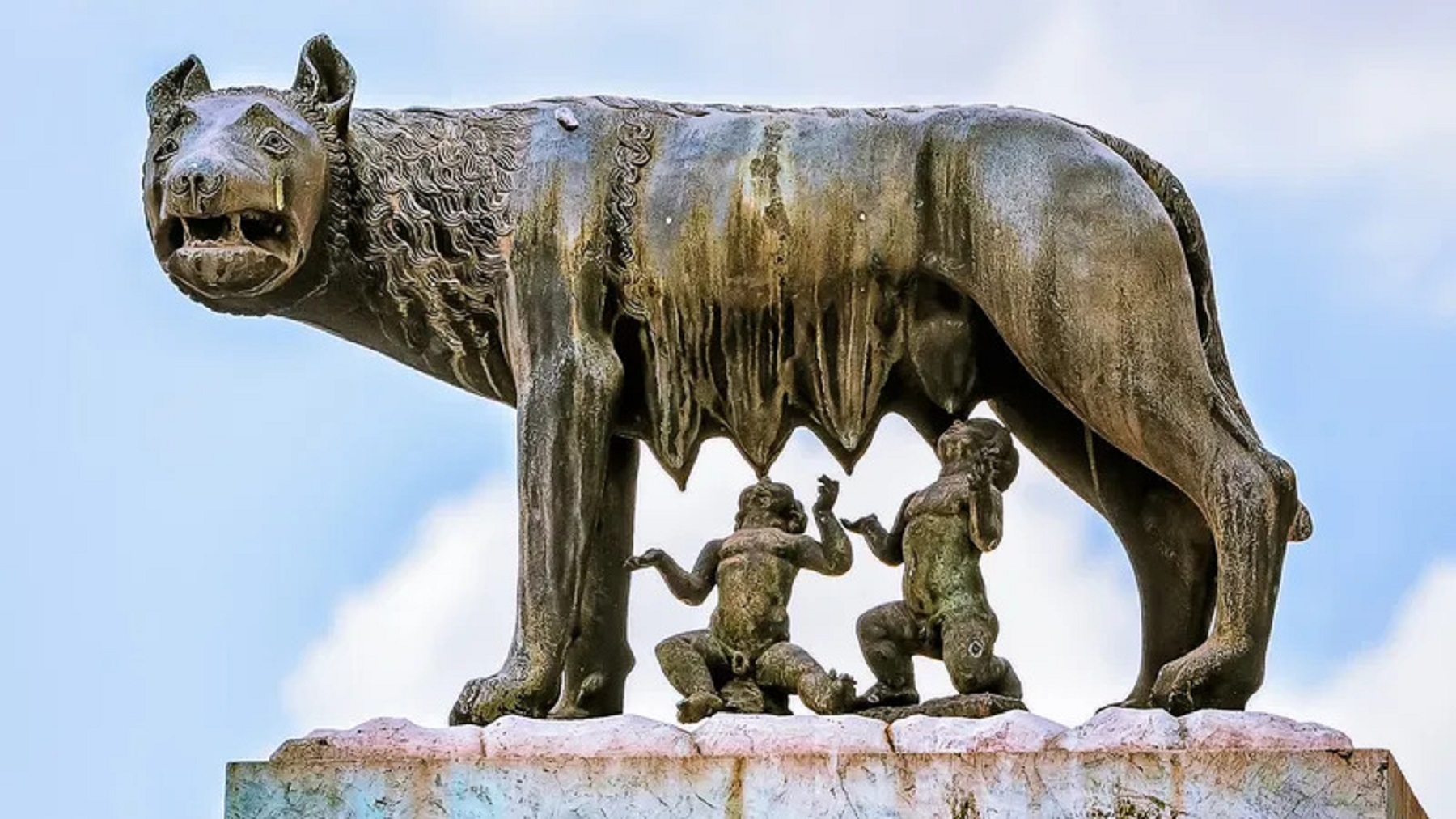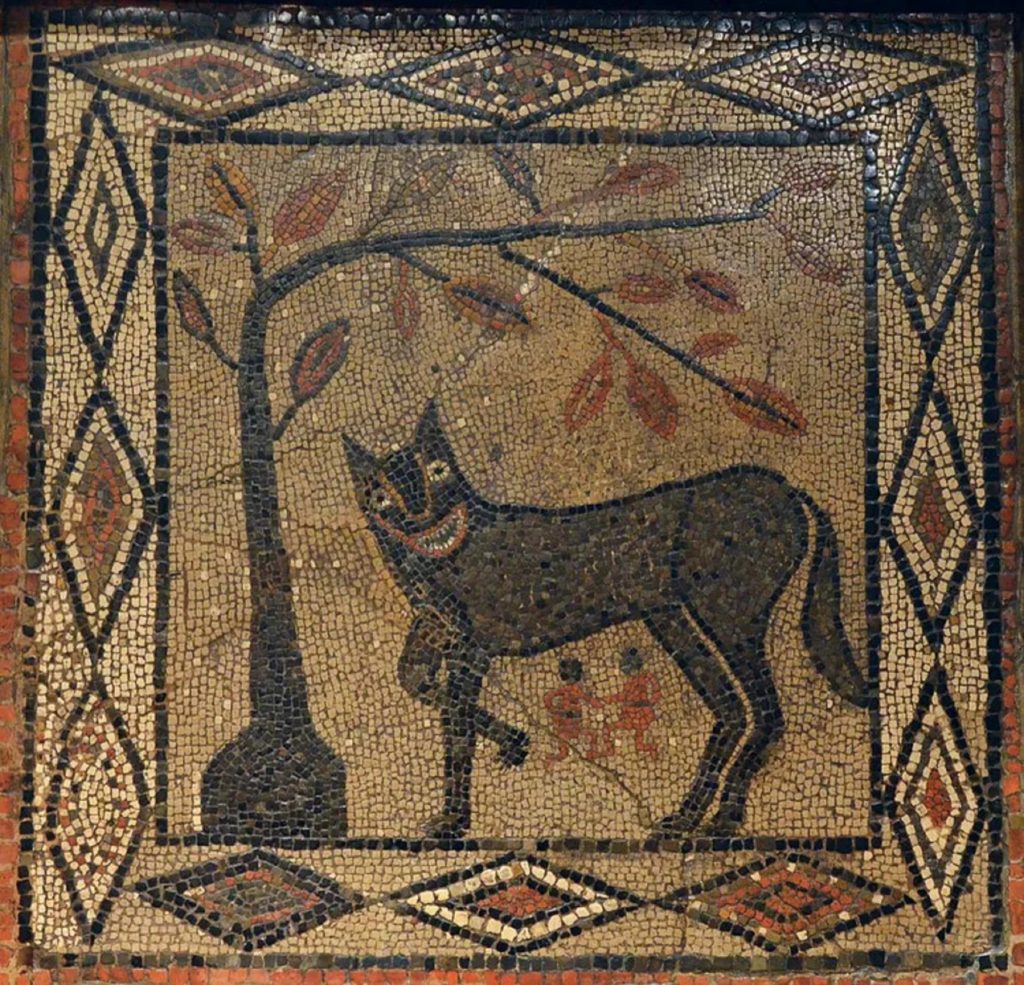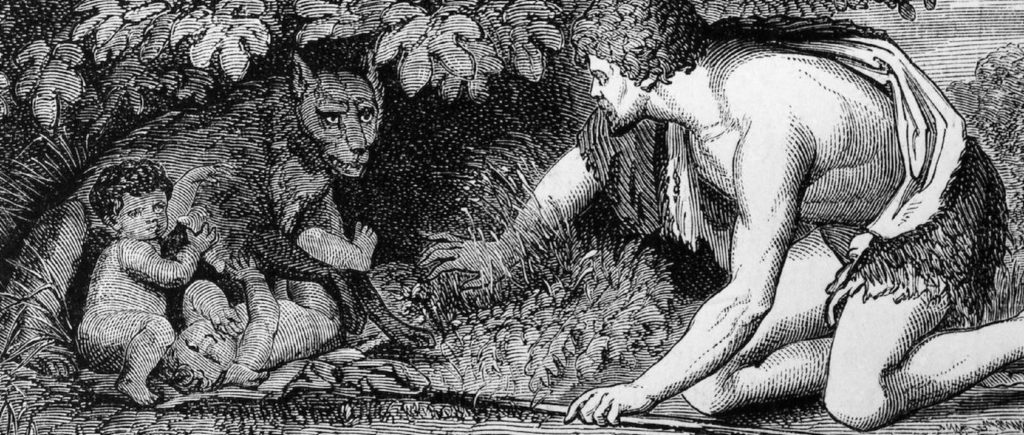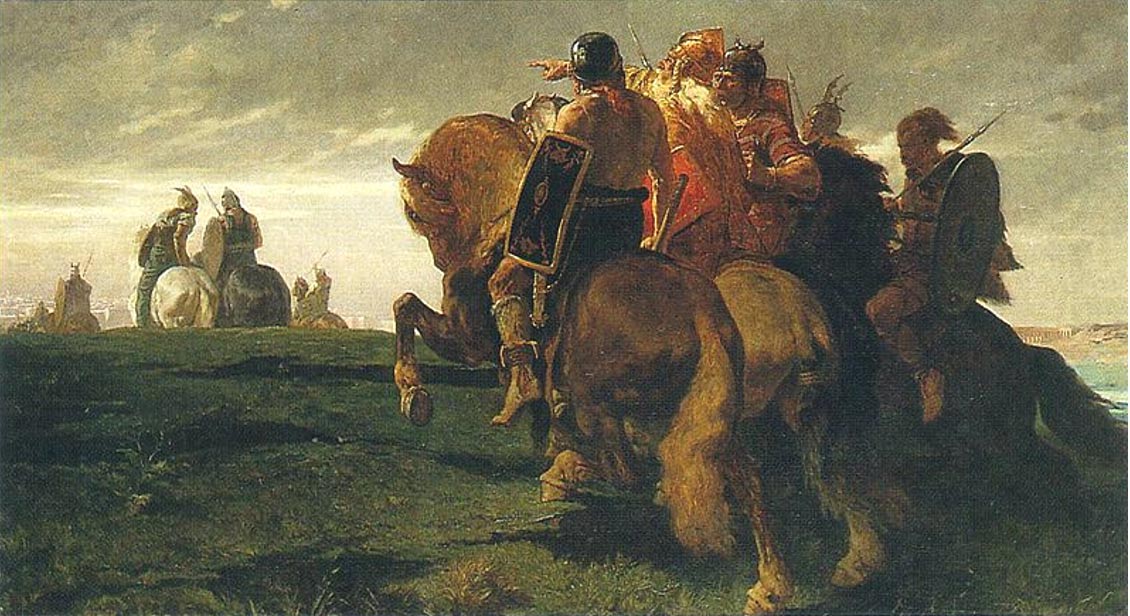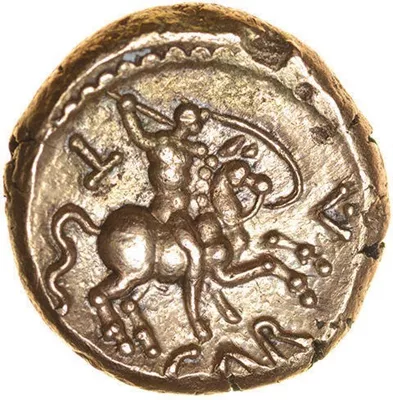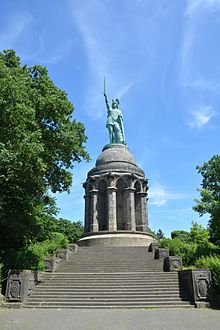
If you are a regular reader of my blog then you know how much I am interested in ancient civilizations across the world. It has been a fascination of mine my whole life and have amassed a decent part of my personal library cover this topic. One region of the world I really enjoy studying is the Mediterranean; from the Roman empire to Greece to the Carthage, etc. One particular ancient civilization in that region I feel really had a big part in shaping the future civilizations of not only Italy but the surrounding area are the people who were known as the Etruscans. From their culture, art, rituals, deities, occult practices and more, these people have a fascinating history which is what today’s blog is all about.
Who Were The Etruscans?

Despite their amazing achievements and lasting influence, the Etruscans remain one of Italy’s great mysteries. Fleur Kinson sheds a little light.
For most of us, ‘Etruscan’ is one of those words we’ve met many times but, if pressed, couldn’t precisely explain. We might know the word has some connection with Tuscany. We might even know that the Etruscans were a people, and that they did impressive things of some kind. But like ‘Phoenicians’ and ‘Carthaginians’, they tend to be a name with no picture – another obscure, long-dead ethnic group only familiar perhaps to people with a classical education. If you plan to visit anywhere in central Italy, it’s really worth sharpening up your hazy understanding. You’re going to meet that word ‘Etruscan’ everywhere you go; a lot of irritation can be saved by clearing it up here. A word of warning, though: it’s a well-founded cliché that anyone who starts learning about the Etruscans quickly becomes hooked on the subject. If you can’t bear to acquire a new interest, look away now.
For half a millennium or more, the Etruscans were Europe’s most advanced civilization outside Greece. Made wealthy by international trade, they spent their time making wine, building roads, draining marshes, painting vases, founding cities, creating sculptures, and constructing aqueducts. Hmmm… sounds a bit like the Romans, doesn’t it? Well it should. Consider three facts: i) at least two of Rome’s earliest kings were Etruscans; ii) most Romans had some Etruscan ancestors; and iii) the Romans took many of their ideas on art, law, religion, public institutions, water management and road-building directly from the Etruscans. You owe more to these unfamiliar ancient people than you probably imagine.
The Etruscans themselves, keen on living for the moment, didn’t seem to care whether or not they preserved their glory for posterity. When their civilization was subsumed into Roman, they didn’t bother asserting a self-consciously distinct ethnicity and melded with the newcomers. Thus an artistic and fun-loving culture was half erased from history – a culture in which banquets were eaten in bed while dancers pranced about and wine-throwing games were played. A culture with strong erotic sensibilities, but also with rudimentary sexual equality – something lost, alas, on the Romans.
With so little testament to the particularities of Etruscan existence and so much testament to the spectacular existence of the Romans, popular and academic attention has understandably always concentrated on the latter. Indeed, scholarship on things Etruscan only really started in the last century or two – and studies still abound with words like ‘mysterious’ and ‘enigmatic’. Etruscan civilization might have been rescued from historical oblivion, but only just. Continue reading HERE.
Occult and Spiritual Practices
As some of you may know, the Etruscans much like most ancient civilizations were spiritual people with certain holidays, death rituals and magical practices. It was basically intertwined into their culture much like what we saw with the Romans before they converted to Christianity.
A couple of years ago I came across the reprint of a book originally published in 1963 titled, Etruscan Magic and Occult Remedies by author Charles Godfrey Leland. This amazing book goes into such depth on the magical and occult practices of the Etruscans even with detailed descriptions of potions and spells.
The book itself is described as a “scarce antiquarian book”which was essential to have reprinted and I for one am grateful this was done.

Etruscan art and the afterlife

Early on the Etruscans developed a vibrant artistic and architectural culture, one that was often in dialogue with other Mediterranean civilizations. Trading of the many natural mineral resources found in Tuscany, the center of ancient Etruria, caused them to bump up against Greeks, Phoenicians, and Egyptians in the Mediterranean. With these other Mediterranean cultures, they exchanged goods, ideas, and, often, a shared artistic vocabulary.
Unlike the Greeks, however, the majority of our knowledge about Etruscan art comes largely from their burials. (Since most Etruscan cities are still inhabited, they hide their Etruscan art and architecture under Roman, Medieval, and Renaissance layers.) Fortunately, though, the Etruscans cared very much about equipping their dead with everything necessary for the afterlife—from lively tomb paintings to sculpture to pottery that they could use in the next world.
From their extensive cemeteries, we can look at the “world of the dead” and begin to understand some about the “world of the living.” During the early phases of the Etruscan civilization, they conceived of the afterlife in terms of life as they knew it. When someone died, he or she would be cremated and provided with another “home” for the afterlife. Continue reading HERE.
How an Individual Lived
The Origin of the Etruscans
The Etruscan Orientation, c. 600-400 BCE
The Roman Conquest, c. 400-20 BCE
Mythology and Religion
Art and Music
The Etruscan Language and Writing
Architecture
Surviving Text and Literature
And much, much more!
An intriguing phenomenon

© Daderot, CC0, via Wikimedia Commons
With an extinct language that is only partly understood, much of what was initially known about Etruscan civilization comes from the commentary of later Greek and Roman writers. One hypothesis about their origins, the one favored by Herodotus, points to the influence of ancient Greek cultural elements to argue that the Etruscans descended from migrating Anatolian or Aegean groups. Another, championed by Dionysius of Halicarnassus, proposes that the Etruscans originated and developed locally from the Bronze Age Villanovan culture and were therefore an autochthonous population.
Although the current consensus among archaeologists supports a local origin for the Etruscans, a lack of ancient DNA from the region has made genetic investigations inconsistent. The current study, with a time transect of ancient genomic information spanning almost 2000 years collected from 12 archaeological sites, resolves lingering questions about Etruscan origins, showing no evidence for a recent population movement from Anatolia. In fact, the Etruscans shared the genetic profile of the Latins living in nearby Rome, with a large proportion of their genetic profiles coming from steppe-related ancestry that arrived in the region during the Bronze Age.
Considering that steppe-related groups were likely responsible for the spread of Indo-European languages, now spoken around the world by billions of people, the persistence of a non-Indo-European Etruscan language is an intriguing and still unexplained phenomenon that will require further archaeological, historical, linguistic and genetic investigation.
“This linguistic persistence, combined with a genetic turnover, challenges simple assumptions that genes equal languages and suggests a more complex scenario that may have involved the assimilation of early Italic speakers by the Etruscan speech community, possibly during a prolonged period of admixture over the second millennium BCE,” says David Caramelli, Professor at the University of Florence. SOURCE
The Archeological Story

Archaeologists working in a large necropolis 75 miles from Rome recently discovered the impressive tomb of an Etruscan noble family dating to the 7th century B.C.
In the nineteenth century, the ancient tombs of Vulci, some 75 miles northwest of Rome and 25 miles west of Viterbo, were a stop on travelers’ Grand Tour of Europe. Since the late eighteenth century, when the first official excavations were undertaken on the orders of Cardinal Guglielmo Pallotta, numerous burials, ranging from the simple to the spectacular, had been found in the area. In the Necropoli dell’Osteria, roughly translated as the “Necropolis of the Pub,” travelers encountered impressively built and richly decorated burials dating from the seventh to fourth centuries B.C. belonging to the Etruscan culture that had once inhabited the region. Some of the tombs had evocative names given to them in contemporary times in order to attract more visitors. There was the Tomb of the Sun and the Moon, the Tomb of the Inlaid Ceiling, and the Tomb of the Panathenaica, named after the sacred athletic and literary games held every four years in Athens to celebrate the goddess Athena. Continue reading HERE.
Excavations of a 2nd century BC burial site in the southern Tuscany region of Italy is providing new insights into Etruscan identity that survived the Roman conquest of Etruria.
The site was discovered in 2017 during a construction project, revealing a settlement and associated burials, which was investigated by researchers at the time but never published.
The settlement is one of few Etruscan sites untouched by looters in antiquity or modernity, allowing researchers to analyze grave goods that are relatively intact, and further understand the distinct Etruscan burial rituals.
According to researchers, the entrenched and distinct characteristics of the Etruscan population survived in the presence of the dominant Roman power and its associated law.
The Etruscan traditions continued for over two centuries following the Roman conquest, shaping the local area with a fusion of both civilization’s social, cultural, and economic habits, until the area was devastated during the Social War between the Roman Republic and several of its autonomous allies (socii) in Italy. SOURCE

While trying to relocate the lost Etruscan tombs of Vulci, archaeologists found over twenty unrecorded graves, tombs, and large funerary complexes. Here, they discovered the Tomb of the Silver Hands, which contained some unique finds that shed light on Etruscan society.
Researchers assigned this name to the remarkable tomb because they found two beautifully styled silver hands, still with gold plate remnants, inside the grave. These hands were part of a sphyrelaton, a wooden funerary figure meant to represent the departed and protect the soul after the body was cremated.
In previous research, it was assumed that tombs containing sphyrelatons belonged to warriors or noblemen, but archaeologists found evidence to the contrary in the Tomb of the Silver Hands. Upon closer inspection, it became clear that this tomb belonged to a high-ranking woman in Etruscan society.
Researchers have also discovered evidence suggesting that both men and women were highly literate, regardless of social status. This is indicated by inscribed objects that have been recovered during archaeological excavations. Mirrors, perfume vases, and cosmetic containers with inscriptions have been recovered among grave goods, as well as inscribed ceramic tablets buried with them in tombs.
This image of equality starkly contrasts what we know of the women of ancient Rome. According to ancient Roman records, women were considered unequal to men and were not seen as full citizens. Instead, young Roman women were limited to education as it pertained to running households and were even subject to legal penalties if they remained unmarried by a certain age. SOURCE
Where Did the Ancient Etruscans Come From?
For generations, researchers have wondered who the Etruscans were and where they came from. As early as the fifth century B.C.E., Greek historian Herodotus wrote that the enigmatic people first lived in a faraway land before migrating to the Italian Peninsula.
Now, reports Ariel David for Haaretz, a sweeping genetic survey has confirmed the Etruscans’ origins, suggesting they were local—and proving Herodotus wrong. The new DNA analysis, which was centered on 82 individuals who lived between 800 B.C.E. and 1000 C.E., shows that these ancient people shared many of the same genes as their Roman neighbors. Researchers collected genetic samples from skeletons found across the former region of Etruria, which spanned Tuscany in northern Italy and the central part of the peninsula, as well as the island of Corsica.
As the study’s authors write in the journal Science Advances, “[T]he local gene pool [was] largely maintained across the first millennium B.C.E.” That finding changed dramatically during the time of the Roman Empire, when imperial expansion sparked the incorporation of populations from across the Mediterranean.
“This huge genetic shift in imperial times transforms Italians from a people firmly within the genetic cloud of Europe into a genetic bridge between the Mediterranean and the Near East,” lead author Cosimo Posth, a geneticist at the University of Tübingen in Germany, tells Haaretz.
Earlier archaeological and genetic research indicated that Italy was initially settled about 8,000 years ago by people migrating from Stone Age Europe and, later, the Eurasian steppes and Anatolia.
“The Etruscans look indistinguishable from Latins, and they also carry a high proportion of steppe ancestry,” Posth tells Andrew Curry of Science magazine. Continue reading HERE.
So as you can see with just this blog post, even though it would appear we know quite a bit about the Etruscans, in reality there is so much that has either been lost in time or yet to be uncovered. I personally hope that Archeological excavations along with preservation and studies of ancient Etruscan site continue so that we can further understand these fascinating people who truly had a hand in shaping the Mediterranean world.
Further Resources
Etruscan Life and Afterlife: A Handbook of Etruscan Studies
Worlds Intertwined: Etruscans, Greek & Romans
Why the Romans Don’t Want You to Know About the Etruscans






